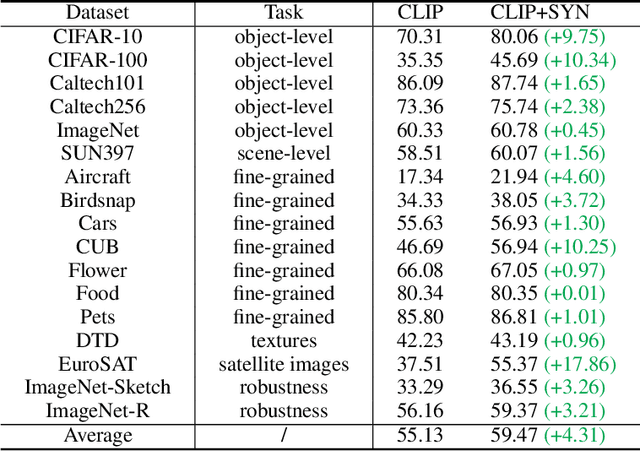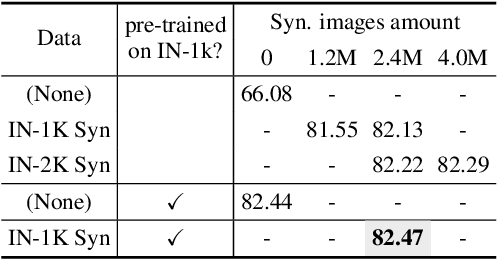Ruifei He
MC-MoE: Mixture Compressor for Mixture-of-Experts LLMs Gains More
Oct 08, 2024



Abstract:Mixture-of-Experts large language models (MoE-LLMs) marks a significant step forward of language models, however, they encounter two critical challenges in practice: 1) expert parameters lead to considerable memory consumption and loading latency; and 2) the current activated experts are redundant, as many tokens may only require a single expert. Motivated by these issues, we investigate the MoE-LLMs and make two key observations: a) different experts exhibit varying behaviors on activation reconstruction error, routing scores, and activated frequencies, highlighting their differing importance, and b) not all tokens are equally important -- only a small subset is critical. Building on these insights, we propose MC-MoE, a training-free Mixture-Compressor for MoE-LLMs, which leverages the significance of both experts and tokens to achieve an extreme compression. First, to mitigate storage and loading overheads, we introduce Pre-Loading Mixed-Precision Quantization, which formulates the adaptive bit-width allocation as a Linear Programming problem, where the objective function balances multi-factors reflecting the importance of each expert. Additionally, we develop Online Dynamic Pruning, which identifies important tokens to retain and dynamically select activated experts for other tokens during inference to optimize efficiency while maintaining performance. Our MC-MoE integrates static quantization and dynamic pruning to collaboratively achieve extreme compression for MoE-LLMs with less accuracy loss, ensuring an optimal trade-off between performance and efficiency. Extensive experiments confirm the effectiveness of our approach. For instance, at 2.54 bits, MC-MoE compresses 76.6% of the model, with only a 3.8% average accuracy loss. During dynamic inference, we further reduce activated parameters by 15%, with a performance drop of less than 0.6%.
Debiasing Text-to-Image Diffusion Models
Feb 22, 2024Abstract:Learning-based Text-to-Image (TTI) models like Stable Diffusion have revolutionized the way visual content is generated in various domains. However, recent research has shown that nonnegligible social bias exists in current state-of-the-art TTI systems, which raises important concerns. In this work, we target resolving the social bias in TTI diffusion models. We begin by formalizing the problem setting and use the text descriptions of bias groups to establish an unsafe direction for guiding the diffusion process. Next, we simplify the problem into a weight optimization problem and attempt a Reinforcement solver, Policy Gradient, which shows sub-optimal performance with slow convergence. Further, to overcome limitations, we propose an iterative distribution alignment (IDA) method. Despite its simplicity, we show that IDA shows efficiency and fast convergence in resolving the social bias in TTI diffusion models. Our code will be released.
Vertical Layering of Quantized Neural Networks for Heterogeneous Inference
Dec 10, 2022Abstract:Although considerable progress has been obtained in neural network quantization for efficient inference, existing methods are not scalable to heterogeneous devices as one dedicated model needs to be trained, transmitted, and stored for one specific hardware setting, incurring considerable costs in model training and maintenance. In this paper, we study a new vertical-layered representation of neural network weights for encapsulating all quantized models into a single one. With this representation, we can theoretically achieve any precision network for on-demand service while only needing to train and maintain one model. To this end, we propose a simple once quantization-aware training (QAT) scheme for obtaining high-performance vertical-layered models. Our design incorporates a cascade downsampling mechanism which allows us to obtain multiple quantized networks from one full precision source model by progressively mapping the higher precision weights to their adjacent lower precision counterparts. Then, with networks of different bit-widths from one source model, multi-objective optimization is employed to train the shared source model weights such that they can be updated simultaneously, considering the performance of all networks. By doing this, the shared weights will be optimized to balance the performance of different quantized models, thus making the weights transferable among different bit widths. Experiments show that the proposed vertical-layered representation and developed once QAT scheme are effective in embodying multiple quantized networks into a single one and allow one-time training, and it delivers comparable performance as that of quantized models tailored to any specific bit-width. Code will be available.
LUMix: Improving Mixup by Better Modelling Label Uncertainty
Nov 29, 2022Abstract:Modern deep networks can be better generalized when trained with noisy samples and regularization techniques. Mixup and CutMix have been proven to be effective for data augmentation to help avoid overfitting. Previous Mixup-based methods linearly combine images and labels to generate additional training data. However, this is problematic if the object does not occupy the whole image as we demonstrate in Figure 1. Correctly assigning the label weights is hard even for human beings and there is no clear criterion to measure it. To tackle this problem, in this paper, we propose LUMix, which models such uncertainty by adding label perturbation during training. LUMix is simple as it can be implemented in just a few lines of code and can be universally applied to any deep networks \eg CNNs and Vision Transformers, with minimal computational cost. Extensive experiments show that our LUMix can consistently boost the performance for networks with a wide range of diversity and capacity on ImageNet, \eg $+0.7\%$ for a small model DeiT-S and $+0.6\%$ for a large variant XCiT-L. We also demonstrate that LUMix can lead to better robustness when evaluated on ImageNet-O and ImageNet-A. The source code can be found \href{https://github.com/kevin-ssy/LUMix}{here}
Is synthetic data from generative models ready for image recognition?
Oct 14, 2022



Abstract:Recent text-to-image generation models have shown promising results in generating high-fidelity photo-realistic images. Though the results are astonishing to human eyes, how applicable these generated images are for recognition tasks remains under-explored. In this work, we extensively study whether and how synthetic images generated from state-of-the-art text-to-image generation models can be used for image recognition tasks, and focus on two perspectives: synthetic data for improving classification models in data-scarce settings (i.e. zero-shot and few-shot), and synthetic data for large-scale model pre-training for transfer learning. We showcase the powerfulness and shortcomings of synthetic data from existing generative models, and propose strategies for better applying synthetic data for recognition tasks. Code: https://github.com/CVMI-Lab/SyntheticData.
Knowledge Distillation as Efficient Pre-training: Faster Convergence, Higher Data-efficiency, and Better Transferability
Mar 26, 2022



Abstract:Large-scale pre-training has been proven to be crucial for various computer vision tasks. However, with the increase of pre-training data amount, model architecture amount, and the private/inaccessible data, it is not very efficient or possible to pre-train all the model architectures on large-scale datasets. In this work, we investigate an alternative strategy for pre-training, namely Knowledge Distillation as Efficient Pre-training (KDEP), aiming to efficiently transfer the learned feature representation from existing pre-trained models to new student models for future downstream tasks. We observe that existing Knowledge Distillation (KD) methods are unsuitable towards pre-training since they normally distill the logits that are going to be discarded when transferred to downstream tasks. To resolve this problem, we propose a feature-based KD method with non-parametric feature dimension aligning. Notably, our method performs comparably with supervised pre-training counterparts in 3 downstream tasks and 9 downstream datasets requiring 10x less data and 5x less pre-training time. Code is available at https://github.com/CVMI-Lab/KDEP.
Re-distributing Biased Pseudo Labels for Semi-supervised Semantic Segmentation: A Baseline Investigation
Jul 26, 2021



Abstract:While self-training has advanced semi-supervised semantic segmentation, it severely suffers from the long-tailed class distribution on real-world semantic segmentation datasets that make the pseudo-labeled data bias toward majority classes. In this paper, we present a simple and yet effective Distribution Alignment and Random Sampling (DARS) method to produce unbiased pseudo labels that match the true class distribution estimated from the labeled data. Besides, we also contribute a progressive data augmentation and labeling strategy to facilitate model training with pseudo-labeled data. Experiments on both Cityscapes and PASCAL VOC 2012 datasets demonstrate the effectiveness of our approach. Albeit simple, our method performs favorably in comparison with state-of-the-art approaches. Code will be available at https://github.com/CVMI-Lab/DARS.
Learning by Analogy: Reliable Supervision from Transformations for Unsupervised Optical Flow Estimation
Mar 29, 2020



Abstract:Unsupervised learning of optical flow, which leverages the supervision from view synthesis, has emerged as a promising alternative to supervised methods. However, the objective of unsupervised learning is likely to be unreliable in challenging scenes. In this work, we present a framework to use more reliable supervision from transformations. It simply twists the general unsupervised learning pipeline by running another forward pass with transformed data from augmentation, along with using transformed predictions of original data as the self-supervision signal. Besides, we further introduce a lightweight network with multiple frames by a highly-shared flow decoder. Our method consistently gets a leap of performance on several benchmarks with the best accuracy among deep unsupervised methods. Also, our method achieves competitive results to recent fully supervised methods while with much fewer parameters.
 Add to Chrome
Add to Chrome Add to Firefox
Add to Firefox Add to Edge
Add to Edge